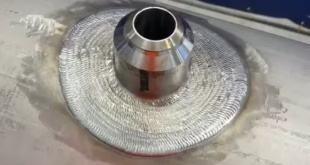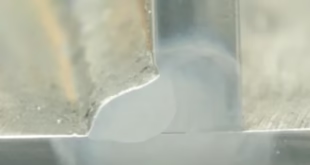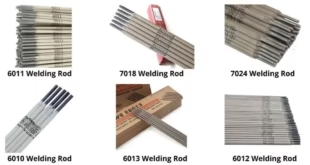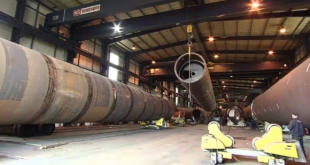Aluminum Welding Challenges and Solutions
Introduction
Aluminum welding stands at the forefront of modern fabrication techniques, playing a pivotal role across diverse industries. This introductory section delves into the essence of aluminum welding, elucidating its definition and underscoring its significance in various sectors.
Definition of Aluminum Welding
Aluminum welding refers to the process of joining aluminum pieces together using various welding methods. Unlike welding steel or other metals, aluminum welding presents unique challenges due to the material’s distinct properties.
Aluminum boasts remarkable characteristics such as high thermal conductivity and low melting point, making it a preferred choice in industries ranging from automotive and aerospace to construction and marine. Its lightweight yet robust nature makes it indispensable in manufacturing applications where strength-to-weight ratio is paramount.

Common Challenges in Aluminum Welding
Aluminum welding, while highly versatile, presents a set of unique challenges that demand meticulous attention and expertise from welders. Understanding and navigating these challenges is essential for achieving high-quality welds. In this section, we explore the common hurdles encountered in aluminum welding.
Material Properties
- High Thermal Conductivity: One of the primary challenges in aluminum welding is its high thermal conductivity. Unlike other metals, aluminum dissipates heat rapidly, making it prone to distortion and burn-through if not properly managed during the welding process. Controlling the heat input becomes crucial to prevent excessive melting and maintain weld integrity.
- Oxide Layer Formation: Aluminum naturally forms an oxide layer on its surface, which poses a barrier to successful welding. This oxide layer must be meticulously removed prior to welding to ensure proper fusion between the base metal and filler material. Failure to remove the oxide layer can result in poor weld quality and compromised mechanical properties.
Distortion and Warping
- Heat Input Sensitivity: Aluminum’s sensitivity to heat input makes it susceptible to distortion and warping during welding. The high thermal conductivity of aluminum exacerbates this issue, as excessive heat can cause significant distortion in the welded components. Welders must employ techniques to manage heat input effectively, such as adjusting welding parameters and employing proper fixturing.
- Differential Expansion Rates: Another factor contributing to distortion in aluminum welding is the differential expansion rates between the weld metal and the base material. As the welded assembly cools, differential contraction rates can lead to residual stresses and distortion in the final product. Proper preheating and post-weld heat treatment can help alleviate these issues.
Porosity and Inclusions
- Gas Entrapment: Porosity, caused by gas entrapment in the weld pool, is a common defect encountered in aluminum welding. The high solubility of hydrogen in molten aluminum makes it prone to gas absorption, which can result in porosity if not properly controlled. Effective shielding gas coverage and proper welding techniques are essential for minimizing gas entrapment and ensuring sound welds.
- Contaminants: Contaminants such as oil, grease, or dirt present on the surface of aluminum can lead to inclusions in the weld, compromising its integrity. Thorough cleaning and surface preparation are imperative to remove contaminants and achieve clean, defect-free welds.
Solutions to Overcome Aluminum Welding Challenges
Successfully navigating the challenges of aluminum welding requires a combination of expertise, proper techniques, and meticulous preparation. In this section, we explore effective solutions to overcome these challenges and achieve optimal welding outcomes.
Proper Preparation
- Surface Cleaning and Preheating: Prior to welding, thorough cleaning of the aluminum surface is essential to remove any contaminants such as oil, grease, or oxide layers. Cleaning methods may include solvent degreasing, mechanical abrasion, or chemical cleaning. Additionally, preheating the aluminum workpiece can help reduce thermal shock and minimize distortion during welding, particularly for thicker sections.
- Shielding Gas Selection: Selecting the appropriate shielding gas is crucial for ensuring a stable arc and protecting the weld pool from atmospheric contamination. Pure argon or argon-helium mixtures are commonly used as shielding gases for aluminum welding due to their inert properties and ability to provide adequate coverage. Careful consideration should be given to gas flow rates and nozzle design to optimize shielding effectiveness.
Technique Adjustments
- Controlling Heat Input: Effective control of heat input is paramount in aluminum welding to prevent excessive melting, distortion, and burn-through. Techniques such as pulse welding or adjusting welding parameters such as voltage, current, and travel speed can help control heat input and maintain proper penetration without compromising weld quality.
- Minimizing Distortion with Fixturing: Proper fixturing and clamping techniques are essential for minimizing distortion and maintaining dimensional accuracy during aluminum welding. Fixtures should be designed to securely hold the workpieces in place while allowing for proper heat dissipation and weld accessibility. Strategic placement of tack welds and use of temporary supports can help distribute welding-induced stresses and minimize distortion.
Filler Material and Electrode Selection
- Alloy Matching: Selecting the appropriate filler material that matches the composition of the base metal is critical for achieving strong, homogeneous welds. Matching the alloy composition ensures compatibility and helps prevent issues such as weld cracking and metallurgical incompatibility. Welding consumables should be carefully chosen based on the specific aluminum alloy being welded.
- Fluxes and Additives: In certain welding applications, fluxes and additives may be used to improve weldability and enhance the quality of aluminum welds. Fluxes help remove surface oxides and promote wetting, while additives such as silicon can improve fluidity and mechanical properties. However, careful consideration should be given to the type and quantity of fluxes and additives used to avoid adverse effects on weld integrity.
Advanced Techniques and Equipment
As the demand for precision and efficiency in aluminum welding continues to rise, advanced techniques and specialized equipment have emerged to address the unique challenges of working with this versatile material. In this section, we explore three advanced methods that offer enhanced control and quality in aluminum welding.
Pulsed MIG Welding
Pulsed MIG welding, also known as pulse gas metal arc welding (GMAW-P), is a highly effective technique for aluminum welding that offers greater control over heat input and weld penetration. Unlike traditional MIG welding, which maintains a constant current and voltage, pulsed MIG welding alternates between high peak currents and low background currents. This pulsing action allows for precise control of the weld pool, minimizing the risk of overheating and distortion while promoting optimal fusion.
Key advantages of pulsed MIG welding in aluminum applications include improved arc stability, reduced spatter, and enhanced weld appearance. The ability to adjust pulse parameters such as pulse frequency, peak current, and background current provides welders with greater flexibility to tailor the welding process to specific aluminum alloys and thicknesses. Overall, pulsed MIG welding offers a reliable and efficient solution for producing high-quality aluminum welds with minimal distortion and superior mechanical properties.
TIG Welding with AC Balance Control
Tungsten inert gas (TIG) welding, also known as gas tungsten arc welding (GTAW), is a precise and versatile welding process commonly used for aluminum fabrication. When welding aluminum with TIG, alternating current (AC) is typically employed to prevent oxide buildup on the tungsten electrode and ensure proper penetration. AC balance control allows welders to adjust the ratio of electrode positive (EP) to electrode negative (EN) cycles, effectively controlling the cleaning and penetration characteristics of the arc.
By optimizing AC balance control, welders can achieve superior weld cleanliness and aesthetic appearance while maintaining adequate penetration and fusion. Increasing the electrode positive (EP) cycle enhances cleaning action, removing surface oxides and contaminants from the weld area. Conversely, increasing the electrode negative (EN) cycle improves arc stability and penetration, ensuring proper fusion between the base metal and filler material.
TIG welding with AC balance control is particularly well-suited for welding aluminum alloys with high oxide content, such as 6xxx series alloys, where oxide removal is critical for achieving sound welds. With precise control over AC balance, welders can produce high-quality aluminum welds with minimal risk of defects and superior mechanical properties.
Laser Welding
Laser welding is a cutting-edge welding technology that offers unparalleled precision, speed, and versatility in aluminum fabrication. By harnessing the focused energy of a laser beam, this non-contact welding process delivers pinpoint accuracy and minimal heat input, making it ideal for welding thin aluminum components with intricate geometries.
Key advantages of laser welding in aluminum applications include minimal distortion, narrow heat-affected zones, and high welding speeds. The concentrated heat source of the laser beam allows for rapid and efficient fusion of aluminum alloys, resulting in clean, aesthetically pleasing welds with minimal post-weld cleanup. Additionally, laser welding offers excellent repeatability and process control, ensuring consistent weld quality across production runs.
Case Studies: Real-world Examples
Real-world applications of aluminum welding showcase its importance and effectiveness across various industries. In this section, we delve into two prominent sectors where aluminum welding plays a pivotal role: the automotive industry and aerospace applications.
Automotive Industry
In the automotive industry, aluminum welding is widely utilized to produce lightweight yet durable components that contribute to improved fuel efficiency and performance. One notable example is the body structure of modern vehicles, where aluminum alloys are increasingly replacing traditional steel construction.
Aluminum welding enables automakers to fabricate complex body panels and structural components with precision and efficiency. By reducing the weight of vehicle structures, aluminum welding contributes to enhanced handling, acceleration, and overall driving dynamics. Additionally, aluminum’s corrosion resistance ensures longevity and durability, making it an ideal choice for automotive applications.
Aerospace Applications
In the aerospace industry, aluminum welding is indispensable for fabricating structural components, aircraft frames, and engine parts that must withstand demanding operating conditions. Aluminum’s high strength-to-weight ratio, corrosion resistance, and excellent machinability make it a preferred material for aerospace applications.
Aluminum welding techniques such as TIG welding and laser welding are extensively used in the manufacture of aircraft fuselages, wings, and empennages. These processes offer precise control over heat input, ensuring the integrity of welded joints while minimizing distortion and metallurgical defects.
FAQs
What are the main challenges in aluminum welding?
The main challenges in aluminum welding include issues related to surface cleanliness, high thermal conductivity, oxidation, distortion, and crack sensitivity.
How does aluminum welding differ from other types of welding?
Aluminum welding differs from other types of welding due to the material’s unique properties, including high thermal conductivity, susceptibility to oxidation, and crack sensitivity.
What are some common mistakes to avoid in aluminum welding?
Common mistakes to avoid in aluminum welding include inadequate surface preparation, improper shielding gas selection, over or under-heating, and using incorrect filler materials.
Is aluminum welding suitable for all applications?
While aluminum welding is widely used in various industries, it may not be suitable for all applications. Factors such as material thickness, joint configuration, and environmental conditions should be considered when determining the suitability of aluminum welding.
How can I improve my aluminum welding skills?
Improving aluminum welding skills requires practice, training, and familiarity with the specific challenges and techniques associated with welding aluminum. Enrolling in welding courses, seeking guidance from experienced welders, and experimenting with different welding parameters can help enhance proficiency in aluminum welding.
Conclusion
Aluminum welding remains a cornerstone of modern fabrication, offering unparalleled versatility, strength, and performance across a myriad of industries. By embracing innovation, honing craftsmanship, and staying abreast of emerging trends, the journey of aluminum welding continues to push the boundaries of what is possible, paving the way for a future defined by excellence and progress.
 Welding of Welders All about Welding and Welders
Welding of Welders All about Welding and Welders



